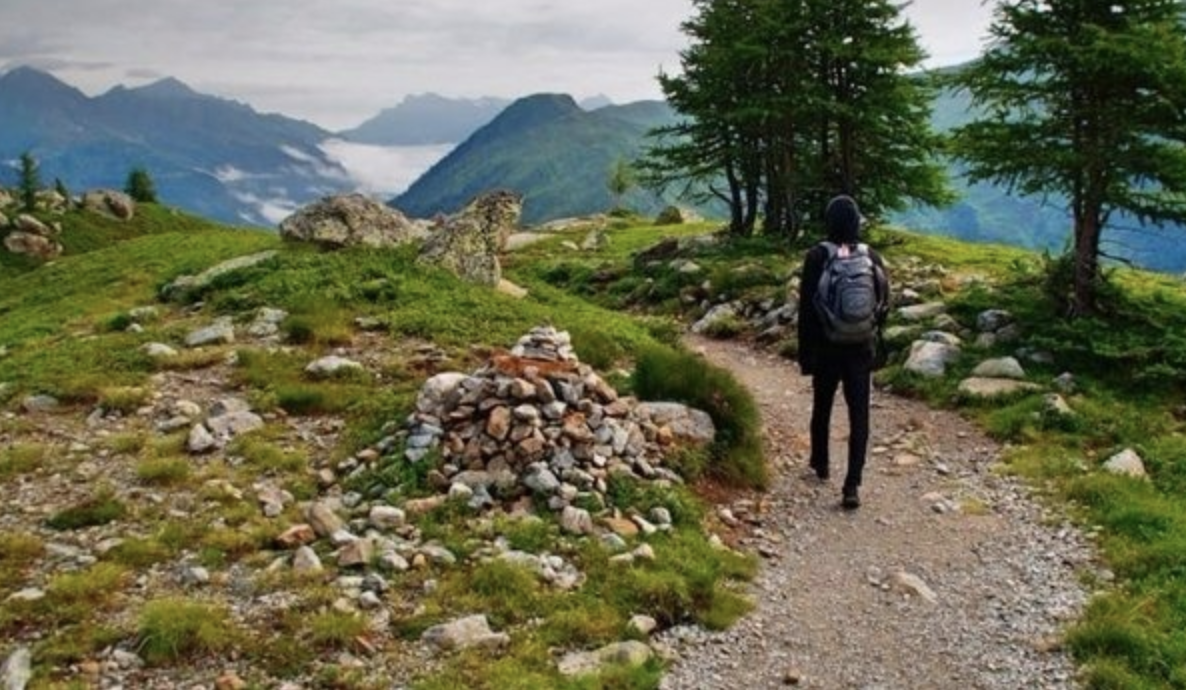The Camino De Santiago
The Camino De Santiago
The Camino De Santiago
El Camino De Santiago or “that long walk in northern Spain that I heard a friend of mine do in 2013” is what we are talking about here. A 500 mile walk with how many pounds strapped to your back? 19 or less preferably, but who’s counting? Oh wait, your feet definitely are! And just in case those four years of highschool Spanish aren’t kicking in El Camino De Santiago means “The walk of Santiago”.
Hundreds and hundreds of years ago this was a religious pilgrimage that spiritual people did in hopes of showing their devotion. There are about ten different routes some even starting in other countries. Each has a name like St. John’s Way.
This walk used to be done with cattle in tow and just the essentials: food, water, a seashell (The symbol that you are a peregrino and often done with bare feet. Also, you can imagine back in the day there wasn’t any music or podcasts to listen to. Just the pilgrims and the open road. Terrifying, right? The pilgrims or peregrinos walk from town to town visiting church after church, praying to the Catholic Saints proving their loyalty to the religion. Though now, millions of people walk or bike this camino for a plethora of reasons. Some are still doing it as a religious experience, some are simply doing it for a physical or even a mental feat. In each town there are what we call in english hostels, in Spanish called albergues, solely for people traveling on the camino. Some of which are run by the Catholic church, and others independently owned. These are anything but luxury accomodations. Think of a cold, sterile room with literally hundreds of metal bunk beds, and those mats you’d take naps on at preschool. Today, a lot of them are exactly that. Some don’t even offer blankets so if you didn’t pack a sleeping bag, you’re simply out of luck. Upon arrival, you show a pilgrim’s passport, and pay a fee. If you get lucky some of them include a meal. However, that is few and far between. These albergues also come with strict rules also. Lights out at 10 pm and up and at em’ at 7am. But after walking for sometimes 8 hours, most pilgrims are so tired and happy to head to bed at the time. Off to the next destination bright and early.
If you’re like most of us, we are looking for some kind of recognition after walking all this way. Today most pilgrims are hoping to obtain a compostela in Santiago. This is a very official looking piece of paper stating where you started your camino, the amount of miles you traveled and has your name hand written in Latin. The only real guidelines to obtain this is that you must collect two stamps a day (at restaurants, churches, or albergues) proving that you walked the minimum mileage from Sarria to Santiago. If a piece of paper isn’t enough to inspire you to try it, the other reward of finishing is that you are invited to a very special, peregrino mass done at the huge, beautiful Catholic church there. This mass expresses gratitude and blesses all the pilgrims. If by chance you get there on an extra special day, you get to see the swinging of the Botafumeria which is like a giant incense burner. Many people take a little bit of a rest here, and then hit the road again. This time it’s off to Muxia and/or Finesterre! The goal of this additional walk is to reach what used to be thought of as “The end of the world”. Now proven not to be the case, but it’s kind of fun to still think that.
I first heard of this “walk” in 2011, when I lived in Madrid, Spain. I was so naive when I met traveler after traveler telling me that they just finished “The Camino de Santiago”. I must have semi researched it, and nonchalantly added it to the list of things I must do before I die. Why? Because anything semi-crazy makes it way on to that list. Well 2018 rolls around and I find myself at a suburban, mom, book club. I end up meeting a phenomenal women named Marianne, who just finished said “camino”. As she spoke about it in such a confident manner, I was a bit embarrassed, because it seemed as if I may have missed the boat on this one. As I shared with her that this was something I knew about and hoped to accomplish one day, she kind of had this blank stare on her face and just calmly said “Why don’t you do it now?”. I laughed it off and said I was planning on doing it soon. At that moment I had NO plans on doing it anytime soon. I went to the bathroom and looked at myself in the mirror, did the math and in that very moment decided that in 3 short weeks I would begin my journey to Santiago. I would have some free time, and if not now it probably would never happen. Over the next few weeks I scoured the internet for anything camino related I could find. I found everything from a movie starring the Sheens, to music videos about it, to facebook support groups to blogs detailing every last detail you can think of. To be honest it was a little bit overwhelming and I’m pretty shocked I still went after getting a list of things to bring, and realizing I had about 5% of it. In case you didn’t know, hiking/outdoors equipment is not cheap! But alas, I told myself I’d do it, and most importantly I announced it on social media, so I was at least going to attempt it. I would be beginning my trek at at the border of France, through the Pyrenees and end at the west end of Spain in Santiago de Compostela 48 days later!
“The Camino De Santiago” was written by Jillian Salazar
Jillian Salazar is an avid traveler from Colorado, USA. She studied abroad in Madrid, Spain and discovered that being on the road long term was definitely for her. In early 2017, she dropped everything, left Denver, and has now been traveling consistently for about a year and a half. Her goal is to show at risk youth, that traveling is an option regardless of where you come from. In October, she will be embarking on her biggest adventure to date- The 500 mile Camino de Santiago. You are welcomed to follow her travels on her personal blog @ ajillianmiles.com.


